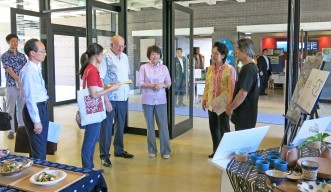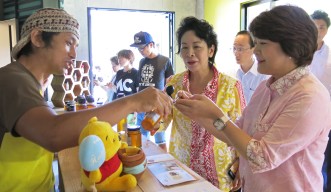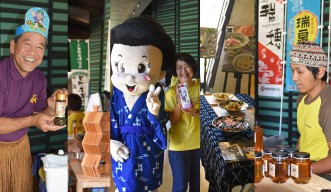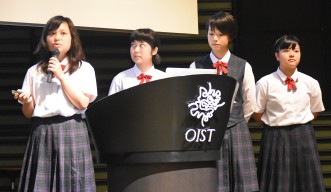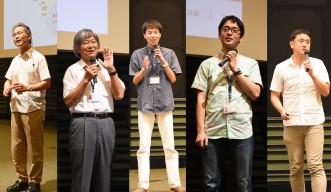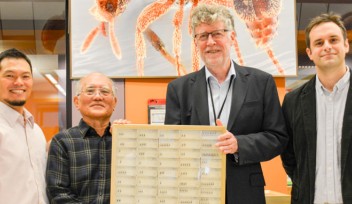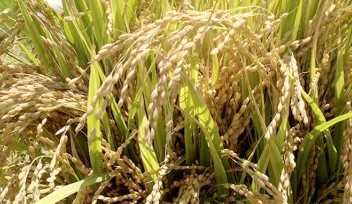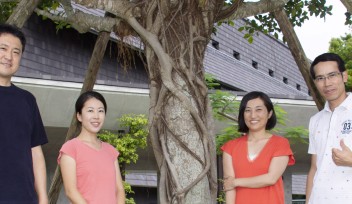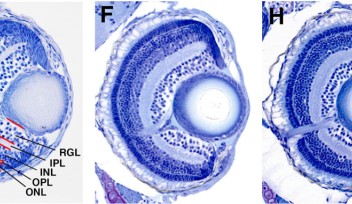The Science on Your Plate
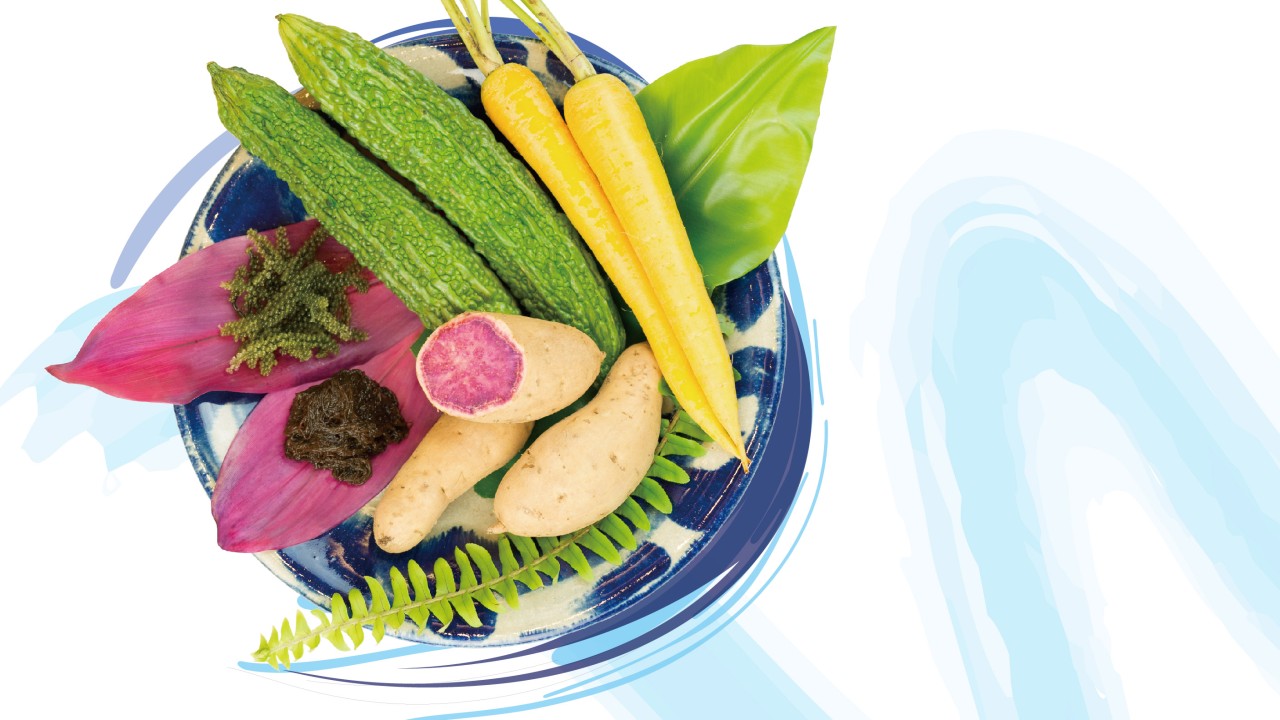
There is more to the food that you eat than you might expect. Have you ever thought about the components in the food that you have for dinner? Or what foods might help you to age more healthily? Through their research, OIST scientists have thought about these questions and found some interesting answers. In an event, “The Science on your Plate,” on Sat., May 28, three OIST professors, along with their researchers and the SCORE! winners from Okinawa Prefectural Kyuyo High School, shared their insight into food science. Before and after the symposium, a gallery of local food, pottery, and food-related vendors showcased and sold their Okinawan merchandise.
The event began with opening remarks from OIST President Jonathan Dorfan and Aiko Shimajiri, Minister of State for Okinawa and Northern Territories Affairs, Minister of State for Science and Technology Policy. “OIST is known for conducting first class research,” Shimajiri said. “Scientific research, like OIST is doing, can lead to breakthroughs in understanding and utilizing our food.”
Following the remarks, OIST Professor Mitsuhiro Yanagida, head of the G0 Cell Unit, spoke about his recently published research on age-related differences found in human metabolites. From human blood samples, he found that metabolites related to antioxidants and muscle strength decreased in older adults. He also found that metabolites related to declining kidney and liver function increased in older adults.
“By taking blood and looking at the metabolites we can measure the aging process,” Yanagida said. “The key to health is eating healthy and delicious food that is high in antioxidants, as well as continuing to exercise as you age.”
Next, the winners of SCORE! 2015, a group of female students from Kyuyo High School spoke about their experiments on Umibudō , also called sea grapes, a type of edible seaweed found in Okinawa. They looked at the best method for growing umibudō and found that if you use more bubbling air and a fertilizer or nutrient, such as additional salt, the sea grapes will grow bigger and the desirable taste will remain.
After the talk by the students, Professor Noriyuki Satoh, leader of OIST’s Marine Genomics Unit, as well as two post-doctoral scholars in his unit, Dr. Asuka Arimoto and Dr. Koki Nishitsuji spoke about the genomics of umibudō and another Okinawan edible seaweed called mozuku. They have found some of the secrets in what makes these sea plants so healthy.
“Mozuku has a lot of antioxidants and cancer-preventing nutrients,” Nishitsuji said. “It contains a high amount of fucoidan, a complex polysaccharide, that has been shown to prevent the growth of cancer cells.”
The final speaker was Professor Hidetoshi Saze the leader of OIST’s Plant Epigenetics Unit who spoke about his research creating a new strain of rice that is made up of digestion-resistant starch. This type of rice does not break down into glucose as quickly, which means that it could help in fighting obesity and diabetes.
“Obesity is a growing problem in Okinawa,” Saze said. “We are trying to breed a new strain of rice for Okinawa that will help.”
Before and after the symposium, a bazaar with local food vendors and food-related vendors was held. The bazaar bustled with the participants tasting samples of local honey and moromi su, a byproduct of the manufacturing of awamori liquor, and buying passion fruits, umibudō, and dressing made from mozuku, as well as other produce and goods.
“I was very happy to be invited to OIST,” Takashi Nakamatsu from local market, Onna no Eki, said. “It is hard to believe that such a beautiful place exists in Okinawa and all the customers were very nice.”
There was also a striking display of Okinawan pottery, called yachimun, from the Kitagama kiln collective of Yomitan Village. The collective uses long-held traditions to make authentic and beautiful dishes. The exhibit showed how eating with beautiful and hand-made, cups, plates, and bowls can make a difference in the pleasure of eating food.
“The pottery of Kitagama accepts and holds food ingredients in a way that makes life more rich,” Kyoshi Matsuda, one of the pottery masters at Kitagama said. “We hope everyone can use beautiful things, every day.”
Throughout the event, it became clear that there is science behind your food and your plate.
For press enquiries:
Press Inquiry Form










